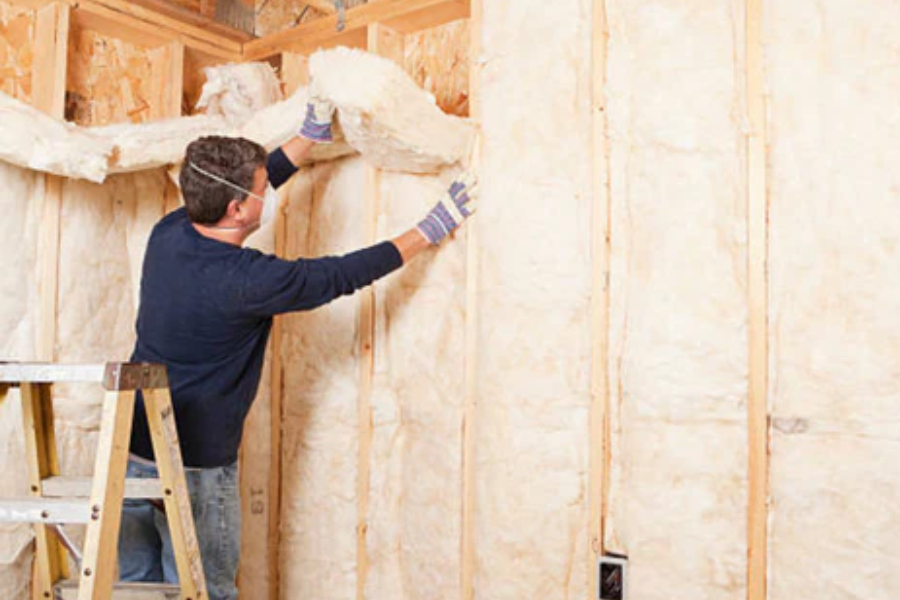When it comes to the winemaking process, one of the most critical factors in ensuring high-quality wine production is maintaining the ideal climate conditions throughout the facility. Wineries, especially those focused on premium wine production, require precise temperature and humidity control to ensure that both the fermentation process and wine storage happen in optimal conditions. To achieve this, many wineries are turning to modern insulation techniques, with spray foam insulation emerging as one of the best solutions.
Spray foam insulation has become increasingly popular in commercial and agricultural buildings due to its excellent thermal performance, air sealing capabilities, and long-term energy savings. In this article, we will explore how spray foam can be used in wineries to improve energy efficiency, protect wine quality, and provide long-lasting environmental benefits.
What is Spray Foam Insulation?
Spray foam insulation is a type of insulation material that is sprayed onto surfaces in a liquid form. The liquid foam expands rapidly as it dries and hardens, forming an airtight barrier that offers superior thermal protection. It is made from a mixture of polyurethane, isocyanates, and other chemical compounds, which together create a durable and flexible foam.
There are two main types of spray foam insulation: open-cell and closed-cell foam. Both types are used in different applications depending on the needs of the building. Closed-cell foam has a higher insulation value and is more resistant to water, making it particularly suitable for environments that require robust protection from moisture—such as wineries.
Why Wineries Need Optimal Climate Control
Wineries are highly sensitive to environmental factors, particularly temperature and humidity, as these elements directly influence the fermentation, aging, and overall quality of wine. Understanding the importance of climate control in a winery can help illustrate why spray foam insulation is such an effective solution.
1. Temperature Control During Fermentation
Fermentation is a delicate process that requires careful temperature regulation. Yeast, which is responsible for converting sugars in the grape juice to alcohol, thrives in specific temperature ranges. If the temperature fluctuates too much, it can lead to off-flavors in the wine or even halt fermentation altogether. Keeping the fermentation room consistently cool, without sudden spikes or drops in temperature, is essential for maintaining high-quality wine.
2. Storage and Aging Conditions
Once fermentation is complete, wine is transferred to storage and aging facilities, often in oak barrels or stainless steel tanks. The aging process is significantly affected by the temperature and humidity levels in the storage room. Too much heat can cause the wine to age too quickly and may result in undesirable flavors, while excessive humidity can cause the corks to swell or shrink, affecting the integrity of the bottles.
To ensure that the wine matures correctly and the bottles remain sealed, temperature and humidity levels need to be carefully controlled. This is where effective insulation comes into play.
3. Energy Efficiency and Cost Reduction
Wineries often operate on a large scale, which means that energy costs can be a significant concern. Maintaining consistent temperatures in large storage areas, fermentation rooms, and tasting areas can put a heavy strain on energy systems, especially if the building is not well-insulated. Spray foam insulation provides a solution by reducing the need for constant heating and cooling, leading to lower energy consumption and cost savings.
Benefits of Spray Foam Insulation in Wineries
The use of spray foam insulation in wineries offers several advantages that make it an ideal solution for improving the climate control and energy efficiency of these facilities. Let’s take a closer look at how spray foam can benefit a winery.
1. Superior Thermal Performance
One of the primary reasons wineries choose spray foam insulation is its exceptional thermal resistance. Spray foam provides an airtight seal that prevents heat transfer, keeping cold air in during the summer and warm air in during the winter. This helps to maintain the desired temperature for fermentation, aging, and storage, regardless of the season or outdoor weather conditions.
Closed-cell spray foam, in particular, has a high R-value (thermal resistance), which makes it especially effective at preventing temperature fluctuations. This is crucial in wineries, where precise control over the internal climate is essential to the winemaking process.
2. Air Sealing and Moisture Control
Spray foam insulation also acts as an excellent air barrier. This is particularly important in wineries where ventilation and humidity levels need to be controlled. Traditional insulation materials, such as fiberglass, can leave gaps and voids that allow air to infiltrate the space. Spray foam, on the other hand, expands as it is applied, filling every crack and crevice in walls, ceilings, and floors to create a continuous seal.
By eliminating air leaks, spray foam helps reduce the amount of outside moisture that enters the building, preventing the growth of mold or mildew that could impact the wine storage conditions. Additionally, the airtight seal helps maintain the desired humidity levels, further protecting the wine from spoilage and maintaining ideal aging conditions.
3. Long-Term Durability and Protection
Another significant benefit of spray foam insulation is its durability. Unlike traditional insulation materials, spray foam is not prone to sagging or settling over time. It maintains its form and performance for many years, ensuring long-term insulation effectiveness.
For wineries, this is a particularly valuable feature because the insulation needs to withstand constant temperature and humidity changes without deteriorating. The long lifespan of spray foam ensures that wineries can continue to benefit from its performance without needing to replace or reapply the insulation frequently.
4. Enhanced Soundproofing
Wineries often have tasting rooms and other areas where visitors gather to sample the wine. Soundproofing is important in these areas to create a peaceful and pleasant environment for customers. Spray foam insulation provides an additional layer of soundproofing by reducing noise transmission between rooms and minimizing outside noise infiltration.
This feature is especially useful in larger winery facilities where different processes may be happening simultaneously, and it helps maintain a calm and quiet atmosphere in areas dedicated to wine tasting and education.
5. Eco-Friendly and Sustainable Solution
Spray foam insulation is a more eco-friendly solution compared to other insulation materials. It helps reduce energy consumption by providing a more efficient thermal barrier, leading to lower carbon emissions from heating and cooling systems. In addition, many spray foam products are made from renewable or recycled materials, making them a more sustainable choice for environmentally conscious wineries.
For wineries that prioritize sustainability and reducing their environmental impact, spray foam insulation can play a significant role in creating a more energy-efficient and eco-friendly operation.
How to Apply Spray Foam Insulation in a Winery
Applying spray foam insulation in a winery is a straightforward process, but it requires expertise and proper equipment to ensure that the application is done correctly. Here’s an overview of the general steps involved:
1. Preparation and Inspection
Before applying spray foam insulation, the area must be thoroughly prepared. This includes cleaning surfaces and ensuring that there are no existing issues, such as mold or water damage, that could affect the performance of the insulation. Any cracks or holes should be sealed prior to the spray foam application to ensure a seamless barrier.
2. Choosing the Right Type of Foam
The type of spray foam used will depend on the specific needs of the winery. Closed-cell spray foam is typically the best choice for wineries due to its higher R-value, moisture resistance, and durability. The insulation contractor will assess the winery’s requirements and recommend the most appropriate product for the job.
3. Application
Once the area is prepared and the right type of foam is selected, the insulation can be sprayed onto walls, ceilings, and floors. The foam expands as it is applied, filling all gaps and providing an airtight seal. In wineries, particular attention should be given to areas like fermentation rooms, storage tanks, and bottling areas to ensure that the insulation creates an effective barrier.
4. Curing and Finishing
After the foam has been applied, it needs time to cure and harden. Once it has fully set, the area will be inspected for any areas that may need additional application or touch-ups. Finally, the foam may be covered with an additional layer of protective material if needed, depending on the specific requirements of the winery.
Conclusion: A Smart Investment for Wineries
Investing in spray foam insulation is a smart decision for any winery looking to improve its climate control, enhance energy efficiency, and ensure the highest quality wine production. The ability to maintain a consistent temperature and humidity level throughout the fermentation and aging process is critical to the overall success of a winery, and spray foam insulation helps achieve that with ease.
Beyond its practical benefits, spray foam insulation also offers long-term durability, cost savings, and eco-friendly advantages that align with the goals of many modern wineries. By making the switch to spray foam, wineries can not only improve their operational efficiency but also ensure that their wine reaches its full potential in the best possible conditions.
With its combination of superior thermal performance, air sealing, moisture control, and sustainability, spray foam insulation is a must-have solution for any winery aiming to stay competitive in the evolving wine industry.



